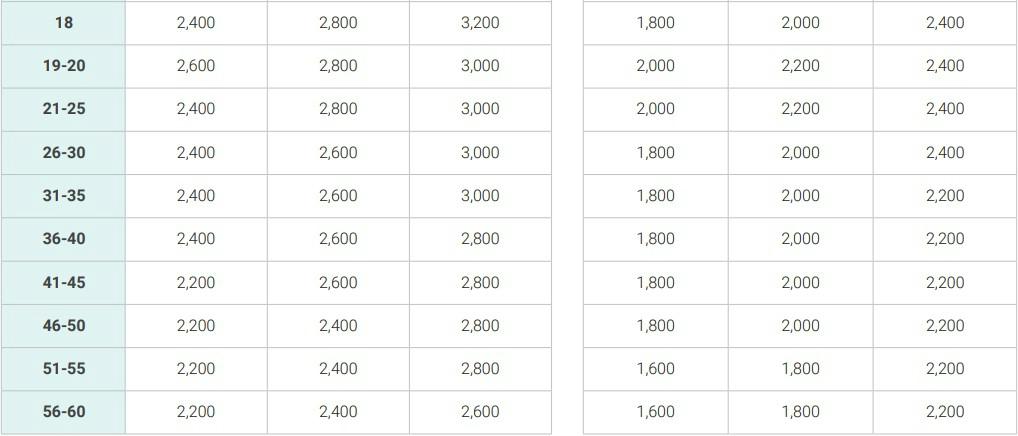Nutrition can make all the difference when it comes to getting 1st or 2nd in competition. Many factors go into optimizing your body & athletic potential; weight training, endurance training, flexibility, agility, coordination, talent, work ethic, stress management, sleep, mental health management, height, weight, recovery, & yes, nutrition. It is one aspect and it is often overlooked & often not fully understood by most athletes from junior high to professional. That’s why most professional athletes have nutritionists to help them understand this specific to their body. At Inside Track Physical Therapy & Wellness, we advise on athlete nutrition to improve sports rehab potential & performance after rehab. This article will discuss what amounts of food they should eat, what kinds of food they should eat, & when they should eat certain foods & not others. We’ll go step by step, so follow along to figure out how best to improve your own nutrition. So follow along!
The first question every athlete should consider is, “How much should I be eating?” The national average recommendation is about 2000 calories/day. This fluctuates though if you are sedentary, moderately active, or very active, what your gender is (although there isn’t much research yet on the nonbinary or transitioned population), & your age. See Chart 1 below for reference:
Chart 1



Dietary Guidelines for Americans 2020-2025
Special cases like adolescent, infant, pregnant, diabetic, CHF, GI issues such as Celiac disease, lymphatic swelling, & other comorbidity-affected nutrition recommendations are not included here. Only that for the average, healthy population accounting for activity level.
Okay, now that you know how much you should be eating, you should know what you should be eating. Brittany Miller, RDN was interviewed for this article & states most people should start by putting their plate together like MyPlate. See Image 1 below:
Image 1

Dietary Guidelines for Americans 2020-2025
This includes making half your plate of food each meal, fruits & vegetables. This incorporates fiber into the diet to help with gut health (more on the gut-brain connection & pain in future blog posts). Another aspect of MyPlate is it suggests having protein at every meal. Athletes require more protein than the average sedentary person to help build & recuperate muscle used during exercise. It’s recommended that athletes eat 1-2 grams of protein per kilogram of body weight (2.2 kilograms in 1 pound). This number can fluctuate depending on how active you are. Some high-intensity athletes, like professionals, can require up to 3 grams of protein per kilogram of body weight! An example calculation, to help you calculate the protein you need, can be found below for a 70kg female who is a recreational runner who does 5 & 10Ks:
70kg body weight1.5g protein/kg body weight =105g protein/day
Miller states, “It’s hard for someone to eat even 100 grams of protein per day. So that is my initial recommendation when I start working with clients.” As a high-performing athlete, it’s usually recommended you eat more than 100 grams of protein per day, but if you are not already eating enough protein, start with small goals to reach 100 grams per day & work up from there.
When choosing protein choices, it’s important to choose lean proteins & proteins with healthy fat. There are 3 kinds of fat you need to be most aware of; saturated fat, unsaturated fat, & trans fat. Trans & saturated fats are known to be BAD fats & unsaturated fats are known to be GOOD fats. A list of kinds of these fats are found below in Table 2:

The last kinds of foods recommended on MyPlate are getting some dairy & grains. Grains include a lot of carbohydrates or carbs. Carbs can be broken into complex & simple carbs. Complex carbs are better for you. They break down slower & leave you fuller & can be used for energy longer without being stored in the body. Simple carbs break down faster & sometimes get used, but then are quickly stored in the body. Complex carbs include things like oatmeal & whole wheat bread/rice. Simple carbs are all the things we love, but that isn’t that good for us, including candy, chocolate, & potato chips. When it comes to dairy, we want to avoid bad fats & try to find more dairy with good fats. But overall, dairy provides a good source of calcium & protein to fuel our bodies.
Now that you know how much & what to eat, we need to know when to eat it. This can get very detailed, so we’ll start with the basics (& dig deeper in future blog posts). First & foremost, eat breakfast! It should be your largest meal of the day. Next, it’s recommended that lunch be your 2nd largest meal of the day. And lastly, dinner should be your smallest meal of the day. The reason for this transition of eating a lot in the morning & less as the day goes on is it fuels your body from the start of the day to start getting your body online to work all day & prevents all the food we sometimes eat at midnight (none of us have EVER done that *insert nervous look here*) from turning to long term storage, or fat.
We hope these actionable steps help you get started today with optimizing your performance ASAP. We love to see our patients & community healthy, strong, & working to better themselves every day! If you have any questions or want more info on this, watch for our next blog post on these topics or reach out to us to discuss more via email, text, or call at our contact info found below. “Til next time.
Bibliography
- USDA. Dietary Guidelines for Americans, 2020-2025. Health And Human Services; 2021.
- D Travis Thomas, M Burke L, Erdman K. Nutrition and athletic performance. Medicine & Science in Sports & Exercise. 2016;48(3):543-568. doi:https://doi.org/10.1249/mss.0000000000000852
- Jeukendrup AE. Periodized Nutrition for Athletes. Sports medicine (Auckland, NZ). 2017;47(Suppl 1):51-63. doi:https://doi.org/10.1007/s40279-017-0694-2
- Miller, RDN B. Nutrition Education with a Registered Dietitian. Published online May 18, 2023.

